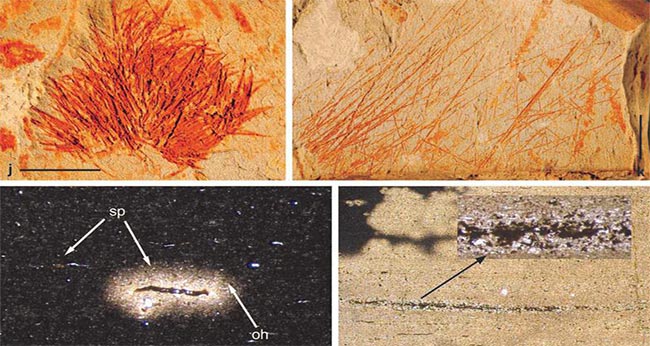
Representative taxa of the Late Ordovician deep-water sponges from South China
The end-Ordovician mass extinction is the first major biotic events of Phanerozoic and the second largest among the Big Five. It occurred near the end of the Ordovician period (between 445.6 Ma and 443.7 Ma), and had a devastating influence on the marine ecosystem. After nearly 40 years investigation in a global scale, there is a consensus that the end-Ordovician mass extinction was stepwise and episodic, and two phases have been recognized, with about one million years in between. Many fossils have been found from the rocks chronostratigraphically corresponding to the interval from the first episode of this event to the latest Ordovician, such as brachiopods, trilobites, corals, graptolites, etc. Sponges are rare in this interval, and only lithistids and stromatoporoids have been sporadically documented. Although many new discoveries show that the non-lithistid spicular sponges (especially the Burgess Shale-type faunas) are known from a broad range of times, and not restricted to the Cambrian, there are still large gaps in the fossil records of non-lithistid spicular sponges during the Late Ordovician. So far, no sponges have been reported from the Late Ordovician in China.
Recently, Dr. LI Lixia from NIGPAS and her colleagues from Nanjing University and Germany report a unique sponge assemblage spanning the interval of the end-Ordovician mass extinction from the base Kaochiapien Formation (uppermost Ordovician-lowermost Silurian) in South China. The research article was published in Scientific Reports.
This sponge assemblage are of latest Ordovician (late Hirnantian) to earliest Silurian (early Rhuddanian) age, just extending across the Ordovician-Silurian boundary. It contains a variety of well-preserved siliceous sponges, including both Burgess Shale-type and modern type taxa. It is clear that this assemblage developed in a deep water, low energy benthic environment with less competitors and more vacant niches. Its flourishing may be related to the euxinic and anoxic condition as well as the noticeable transgression during the end-Ordovician mass extinction. The excellent preservation of this assemblage is probably due to the rapid burial by mud turbidites.
This unusual sponge assemblage gives us an excellent insight into the deep sea palaeoecology and the macroevolution of Phanerozoic sponges, and opens a new window to investigate the marine ecosystem before and after the end-Ordovician mass extinction. It also offers potential to search for exceptional fossil biota across the Ordovician-Silurian boundary in China.
This research was supported by the National Natural Science Foundation of China (NSFC) and the State Key Laboratory of Palaeobiology and Stratigraphy (LPS).
Related information: Lixia Li, Hongzhen Feng, Dorte Janussen and Joachim Reitner. 2015. Unusual Deep Water sponge assemblage in South China – Witness of the end-Ordovician mass extinction. Scientific Reports 5: 16060; DOI: 10.1038/srep16060.
......CONTENTS......
